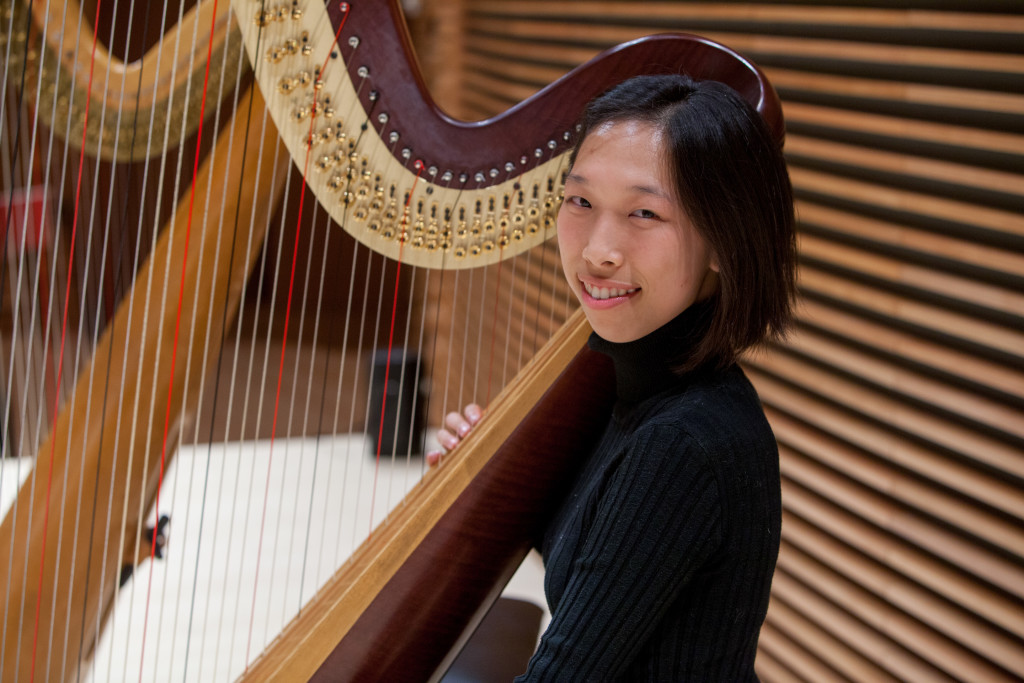videoBy(Toamatapu)
Harpist/designer Selina Her on failing at the piano, curating inspiration, and the ugly beauty of practice.
Stanford Arts Review: How, if at all, does your background or upbringing influence your music?
My dad really likes to sing and my mom plays the piano so I guess there’s a small amount of musical magic dust in the family. When I was small, my mom thought ‘Music should be part of your life. Why don’t we start you on piano?’, since she thought I might like playing an instrument. So I tried out piano when I was six, but after half a year, I quit; I couldn’t tell the difference between all black and white keys! But she wasn’t wrong about me being a musician.
A few months later, she found out there was a harp teacher who lived right around the block and was starting to teach, so I tried it out. It was a bit terrifying, and I had no idea what was going on…
But it was also very, very interesting, so I went back for the next lesson, and the next, and eleven years later, here I am.

Do you feel like there’s some sort of consistent theme or narrative that runs through your art as a whole, whether musical or visual?
Within my visual art and product design work, I certainly have multiple themes. My art is my way of exploring new ideas, new techniques, by taking them in thought-form and giving them physical or digital form. I’ll always want to explore new things, which is why I work with so many different types of media. With one project’s theme, I’ll be in one mindset, and with another project, another mindset. This kind of versatility makes sense to me since as a designer, each problem you’re tackling requires a unique approach. But underlying it all, there is one unifying theme. It’s me. It’s me as I make progress over time, and my work reflects my experiences and learning over time.
Is there a contemporary artist or musician that you find particularly fascinating or inspiring?
I use the internet a lot to research leads I have, and what I do when I’m seeking inspiration is looking for work that captures my eye and attention. Having said that, just because one artist is doing something well right now doesn’t mean that I’ll agree with her entire body of work.
So I hesitate to say that there’s one artist I totally endorse. Instead, I’ll say this: ‘These people had pockets of genius thoughts and those are what I’m interested in.’ This way, you discover so many different people and can gain lots of diverse perspectives.
What is a beautiful thing that most people don’t see as beautiful?
Practice. For people who perform — musicians, dancers, theater people — the culmination of all their work and what they actually want to show to the public is the final performance, which is supposed to be perfect. Oftentimes, the practicing aspects aren’t revealed because practice isn’t pretty, and it can take away from the magic of the performance. And this is a completely valid stance to take.
Still, it’s important to remember that a performance is not a complete reflection of the performer. It’s not a complete reflection of her work ethic. It’s one small window of time in which a number of things could go wrong, and a smaller number of things will go right. I think it’s really important to show your work process to people who are interested because it tells them a lot more about who you are. And as a musician, that’s what you’re trying to do: show others who you are, and connect with them by bringing music to life. To do that, you have to be human, and to be human is to make mistakes.
What’s your aesthetic?
Quirky elegance. A bit of a paradox, I guess. But not that much.
I would say this goes for both my harp playing and my design work. Here’s an example with the former:
Playing the harp requires more physical effort than most people realize. People usually associate the harp with angels and other delicate ephemera, but if you look at a harpist’s hands, they’ll have calluses. Their fingers will be tough, and very strong.
By the way, harpists also lug around an 85 lb instrument. How’s that for angelic?
***
This video profile is part of MuseBlend, a space for artists to talk about their art and connect for collaborations.
